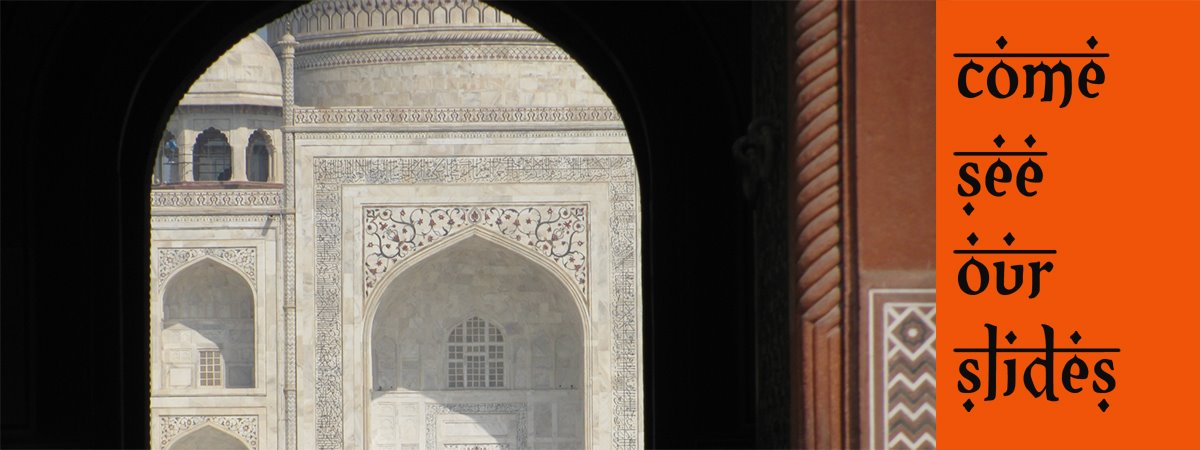







Today we visit Koshish School—Koshish is the Hindi word for “able”. Children who attend this school come from the poorest of the poor. Many of their fathers are rickshaw drivers. If asked, Indian parents almost universally agree that what they want most for their children is an education. Cost for public school, that which is provided by the government, is way beyond the means of these children. Philanthropic schools like the one we are about to visit attempt to fill this gap.
We turn our lives over to Lucky, our cab driver, and hope that he is. Packed hip to hip, three people in the tiny taxi’s back seat, we join that school of fish called Delhi traffic. Taxis, large, overloaded trucks, and countless motorcycles, rickshaws, and tuk-tuks sway in a coordinated dance of near misses, guided by some cosmic force that defies all laws of physics. Bursts of sari clad Indian women, balancing loads on their heads, weave a death defying path between the vehicles. Horns and brakes play a discordant accompaniment to the chaos.
Before long we leave the more familiar streets of Delhi for an unpaved road lined on both sides with mountains of rubbish. By the time we have traveled the length of the road, many local children swarm close to the taxi’s windows; they wave and try to command our attention. Most are boys, wearing the uniform (button front shirts and slacks) of their fathers, passed down like some sex-linked genetic trait. Although they do not “all look alike”, all have black hair and brown eyes. Their skin is a color wheel of browns.
Just before we reach the small, rectangular building that is our destination, we pass several water buffalo, some standing, some making a bed in the muck that is their brownish, grayish waste. Another beautifully saried woman treks to and from the piles of manure produced by these “Bangalore beef”, each time picking up a large handful which she forms into a ball. She transfers the ball to the place where she will ultimately mix it with straw and form it into disks, which when dried, will serve as fuel for heating and cooking.
We are dropped off beside the wrought iron gate in front of the school. This entry, along with commitment, serves to separate the student from the non-student. Both groups are children from the neighborhood that sprawls adjacent; it consists of lean-to shacks resourcefully constructed of wire, cardboard, fraying tarps, and corrugated tin. They have neither running water nor indoor plumbing. Before we can enter the school building, we must remove both our shoes and our socks. With my feet bare, I walk through a landmine of manure to reach the steps that lead to the open doorway. Rows of rubber flip flops and sandals hug the front of the building.
Seated just inside the door on a thin carpet that covers a cement floor are the younger school children. Like lots of baby birds in a very large nest, their eyes are raised, eager to greet us, eager to learn. They chatter unintelligibly, reaching out their hands to shake ours. Clothes consist of “left-overs”; some of the little boys even wear dresses because that is all that they have. Before long they are called to attention by their teacher. While these younger students rhythmically chant “A is for apple”, “B is for ball”, the older boys in the next room intone a haunting Hindu prayer. Some appear to find this task boring and rote while others, their eyes drawn upward, seem to plead, their hands clasped together in fervent supplication. When prayer is completed, one of the youngest of this group is called to the front of the class to strut his stuff. Like a proficient drill sergeant, he shouts out what he has learned for the class to repeat. His teacher radiates silent, confident satisfaction.
A discussion with the Indian woman who is in charge of the school reveals a need for 13,000 rupees (about $270 American dollars)—exams are coming up in March and a tutor is needed for three weeks to help prepare the students. If they pass the exam, they will be allowed to transfer to a government school. This is the ultimate goal of Koshish School. We agree to take care of this need.
We have brought the children a balloon covered gift bag containing pencils and lollipops. A chorus of thank yous accompanies our offering. Soon school is over and it is time to leave. As the students file out, a sea of dirty hands says its goodbyes, waving desperately and repeatedly. Whatever despair might greet them at home, we know that these children and hope will be back tomorrow.

























